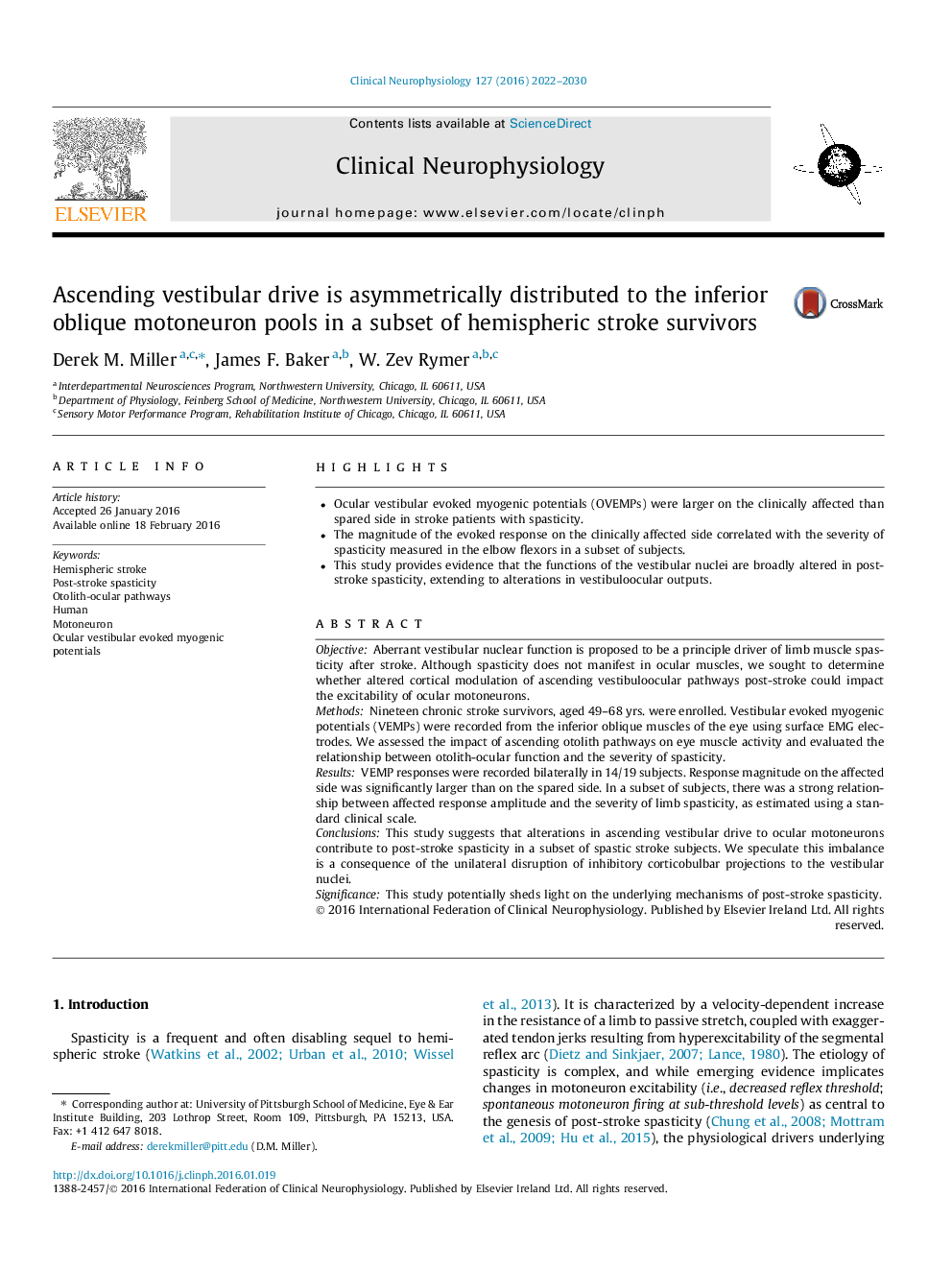| کد مقاله | کد نشریه | سال انتشار | مقاله انگلیسی | نسخه تمام متن |
|---|---|---|---|---|
| 6008154 | 1184963 | 2016 | 9 صفحه PDF | دانلود رایگان |
- Ocular vestibular evoked myogenic potentials (OVEMPs) were larger on the clinically affected than spared side in stroke patients with spasticity.
- The magnitude of the evoked response on the clinically affected side correlated with the severity of spasticity measured in the elbow flexors in a subset of subjects.
- This study provides evidence that the functions of the vestibular nuclei are broadly altered in post-stroke spasticity, extending to alterations in vestibuloocular outputs.
ObjectiveAberrant vestibular nuclear function is proposed to be a principle driver of limb muscle spasticity after stroke. Although spasticity does not manifest in ocular muscles, we sought to determine whether altered cortical modulation of ascending vestibuloocular pathways post-stroke could impact the excitability of ocular motoneurons.MethodsNineteen chronic stroke survivors, aged 49-68 yrs. were enrolled. Vestibular evoked myogenic potentials (VEMPs) were recorded from the inferior oblique muscles of the eye using surface EMG electrodes. We assessed the impact of ascending otolith pathways on eye muscle activity and evaluated the relationship between otolith-ocular function and the severity of spasticity.ResultsVEMP responses were recorded bilaterally in 14/19 subjects. Response magnitude on the affected side was significantly larger than on the spared side. In a subset of subjects, there was a strong relationship between affected response amplitude and the severity of limb spasticity, as estimated using a standard clinical scale.ConclusionsThis study suggests that alterations in ascending vestibular drive to ocular motoneurons contribute to post-stroke spasticity in a subset of spastic stroke subjects. We speculate this imbalance is a consequence of the unilateral disruption of inhibitory corticobulbar projections to the vestibular nuclei.SignificanceThis study potentially sheds light on the underlying mechanisms of post-stroke spasticity.
Journal: Clinical Neurophysiology - Volume 127, Issue 4, April 2016, Pages 2022-2030
